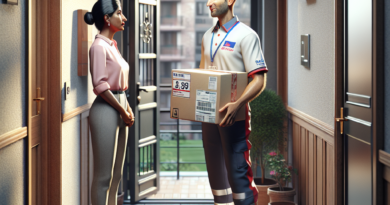The Shopping Mall Bubble: An Oversaturation and Its Implications for Asia – The Malaysian Warning
Excessive Shopping Malls in Malaysia
Malaysia is currently experiencing an overabundance of shopping malls, with latest official statistics indicating there are over a thousand for a population of approximately 33 million.
Most of these malls are concentrated in the metropolitan area of the capital, Kuala Lumpur.
They range from massive retail complexes filled with global brands to smaller venues hosting artisan shops and various merchandise.
In recent years, especially post-COVID pandemic, the Malaysian enthusiasm for shopping malls has led to excessive commercial space, resulting in many complexes struggling with a lack of customer traffic.
What once symbolized a thriving consumer culture now shows signs of saturation, with empty hallways and closed stores echoing the quiet of the once-bustling venues.
Commercial Space Saturation
Malaysia boasts the highest per capita retail space in Southeast Asia.
Remarkably, construction of new shopping centers continues unabated.
Industry experts caution that this retail expansion is becoming unsustainable, highlighting a landscape already saturated with options.
Social media platforms like X and Instagram reflect this irony, as users share images and videos of deserted malls, showcasing the stark contrast between the new, sparkling structures and their lack of patrons.
The Malaysian Mall Bubble
According to a report from the National Property Information Centre (NAPIC), cited by Al Jazeera, commercial space in Malaysia reached 17.69 million square meters in 2023, up from 16.51 million in 2019.
Despite this expansion, national occupancy rates fell below pre-pandemic levels, now sitting at 77.4% in 2023.
However, not all malls share this plight.
The Exchange TRX Mall, which features 125,000 square meters of rentable space and a 10-acre rooftop park, achieved a staggering 95% occupancy upon opening in November.
Strategically located beneath Malaysia’s second tallest building, Exchange 106, it has attracted large crowds due to its extensive dining and luxury retail options.
Retail Challenges and Resilience
The challenges for retailers in this hyper-saturated market are compounded by national economic performance and the weakening ringgit against the US dollar.
To survive, some mall owners have adopted unconventional strategies, including repurposing vacant areas for cryptocurrency mining activities.
Similar Trends in Hong Kong
Across the region in Hong Kong, a similar phenomenon is unfolding.
The once-thriving Heritage 1881 shopping center in Tsim Sha Tsui now sees only three of its 30-plus units occupied, a shift highlighted by The Strait Times.
Similarly, a prime retail space once leased by Omega at near $1.3 million has been rented to a bank for 80% less, while a Transformers-themed fast-food outlet has replaced the former Burberry store in Causeway Bay.
The Bigger Picture
So what has led to this decline? In Kuala Lumpur, the answer lies in an oversupply of malls.
However, in Hong Kong, the decline is largely driven by reduced high-end spending from China, shaking investor confidence in luxury brands globally and leading to a sharp sales drop across the region.
Nowhere is the impact of this decrease more visible than in Hong Kong, once a premier shopping destination for affluent Chinese consumers seeking luxury goods.
Are shopping malls becoming obsolete? Not necessarily, but the reality is that there are too many, and the landscape is vastly different compared to a decade ago.




